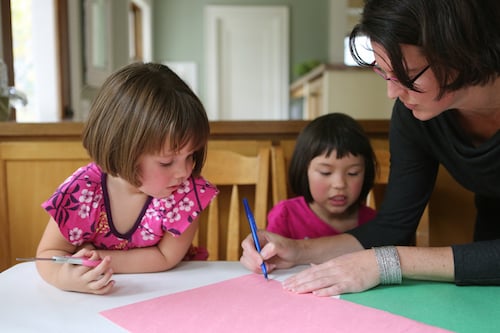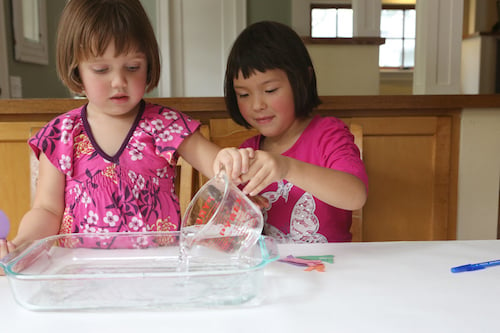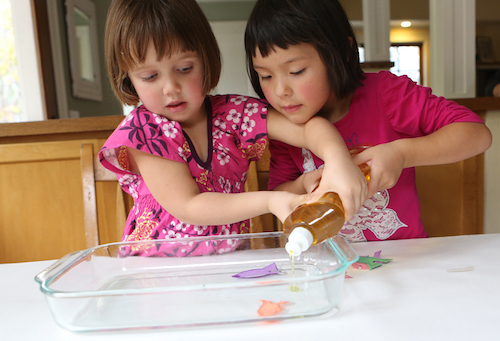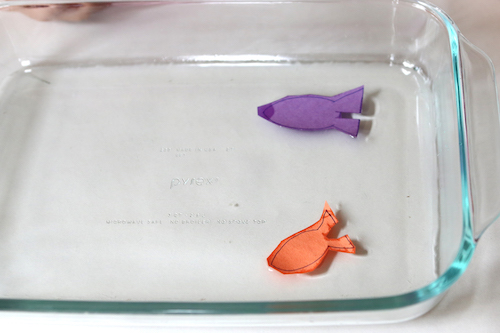Kids love to play with the forces of surface tension by making paper fish "swim" with a drop of dish soap in this simple, fun experiement. Toddlers will have fun dripping soap into the water to make these floating fish zoom, while older kids enjoy designing colorful fish, cutting them out, and racing them across the water.
What You'll Need
- a large rectangular pan or cookie sheet with sides
- heavy construction paper, card stock, thin cardboard, or craft foam
- scissors
- dish soap
How to Make the Fish Zoom

Step 1: Have your children draw fish shapes around 2 inches long from paper, cardboard or foam. Cut the fish shapes out.
Step 2: Make a small rectangular slit in the back of each fish’s tail.

Step 3: Let your children pour a few inches of water into the pan or cookie sheet.

Step 4: Tell your child to place a fish or two in the water on one end of the pan. Immediately add a drop of dish soap to the slot in the fish’s tail, then watch the fishes fly. (Small hands may need a little assistance the first time.)
Step 5: Add fresh water to the pan to repeat the experiment.
Step 6: Try designing fish in different shapes. What swims faster? Sleek sharks or round pufferfish? What happens if you add finely ground pepper to the water and repeat the experiment?
The Science Behind the Fun

Water molecules like to stick together. On the surface of a liquid, they stick very tightly to their neighboring water molecules. This causes a phenomenon called surface tension, which forms a sort of liquid “skin” on the water.
When you add detergent to water, it weakens the attraction between the water molecules, breaking the surface tension. In this experiment, the detergent you drip in the slot of the fish tail breaks the surface tension in that small area, and the fish moves forward into the soap-free water, which has stronger surface tension.
You can find more experiments like this one at kitchenpantryscientist.com, and in my books Kitchen Science Lab for Kids (Quarry Books) and Outdoor Science Lab for Kids (Quarry Books).
© Quarry Books, 2016/Kitchen Science Lab for Kids
Featured Photos Credit: © Quarry Books

